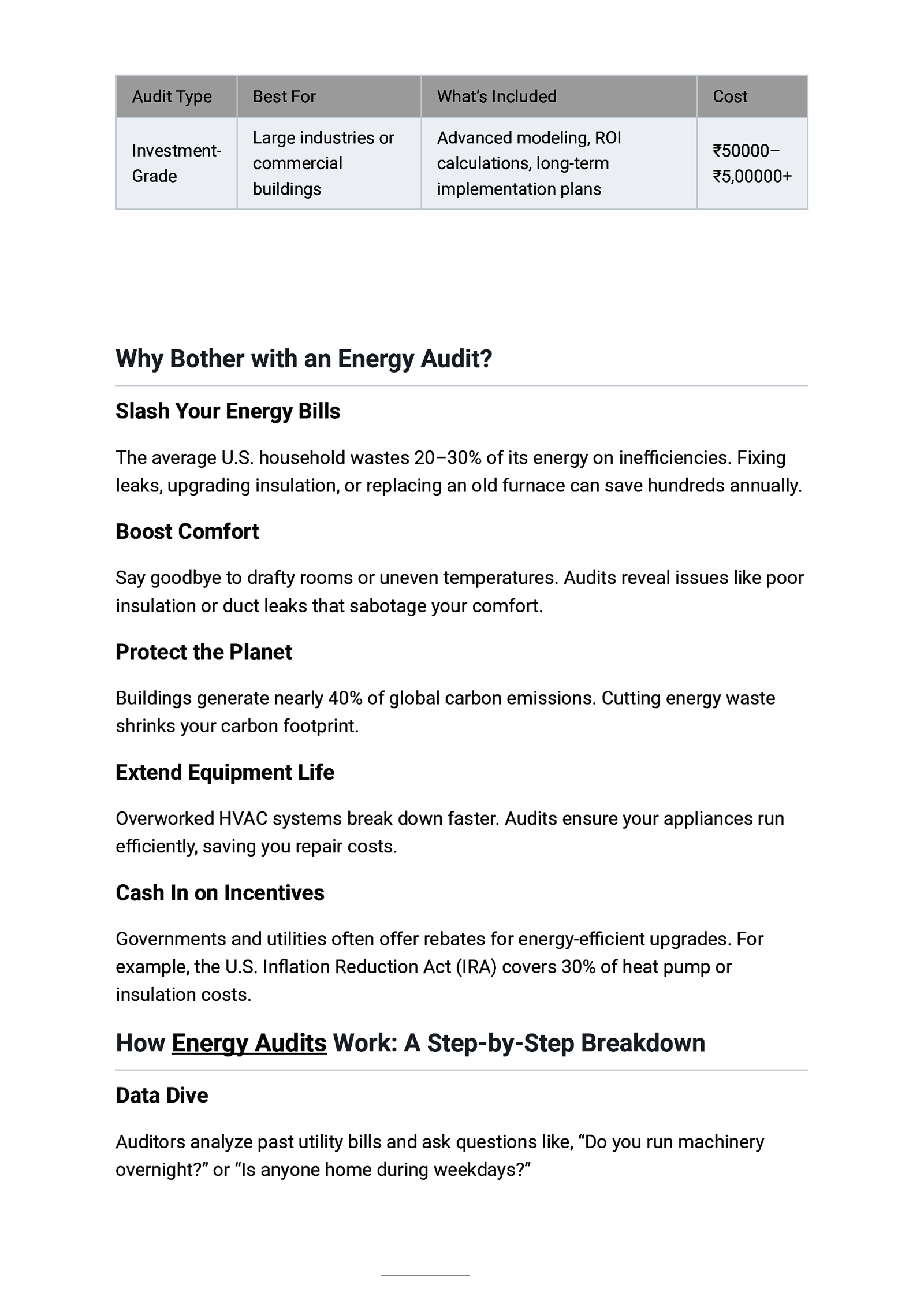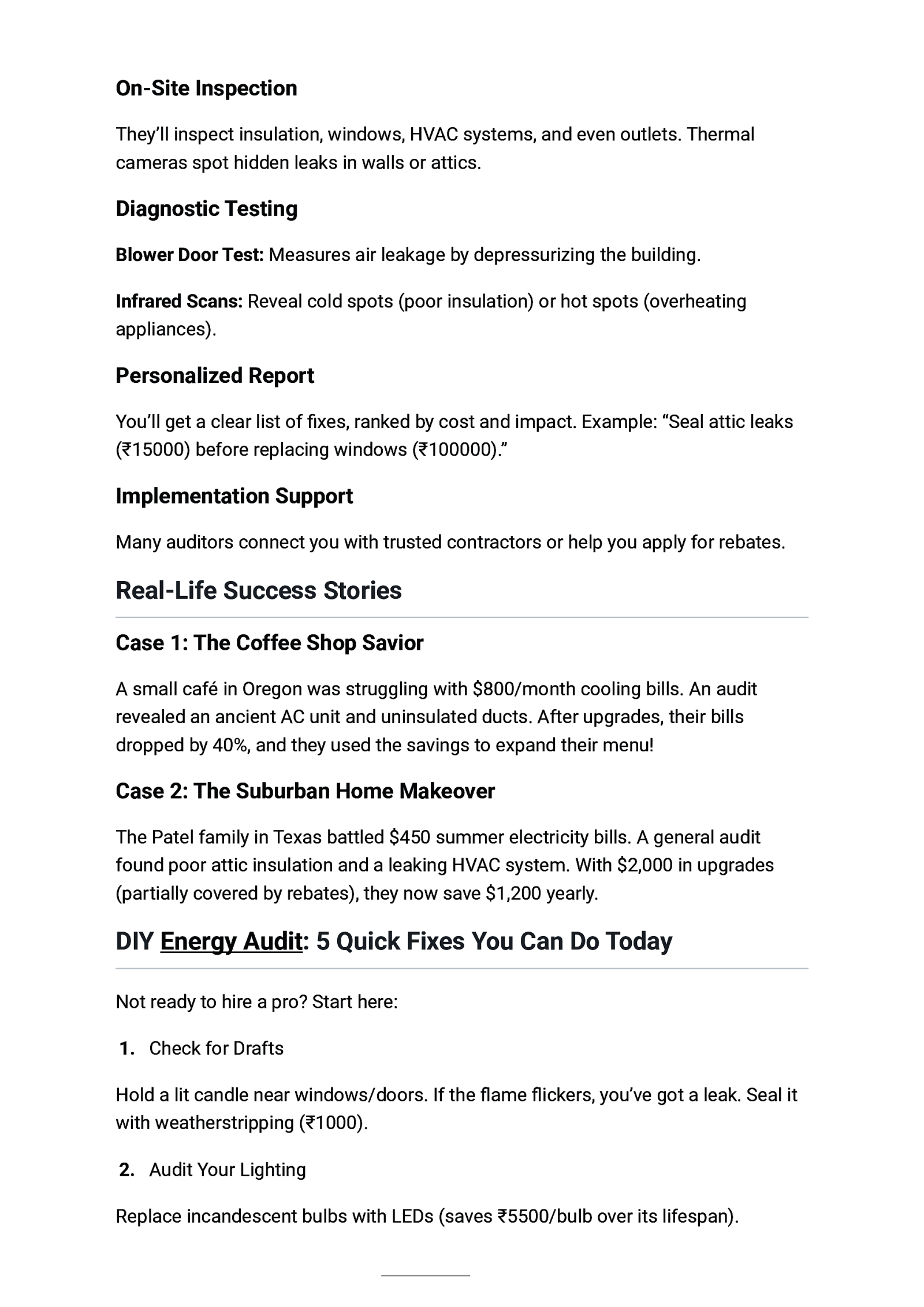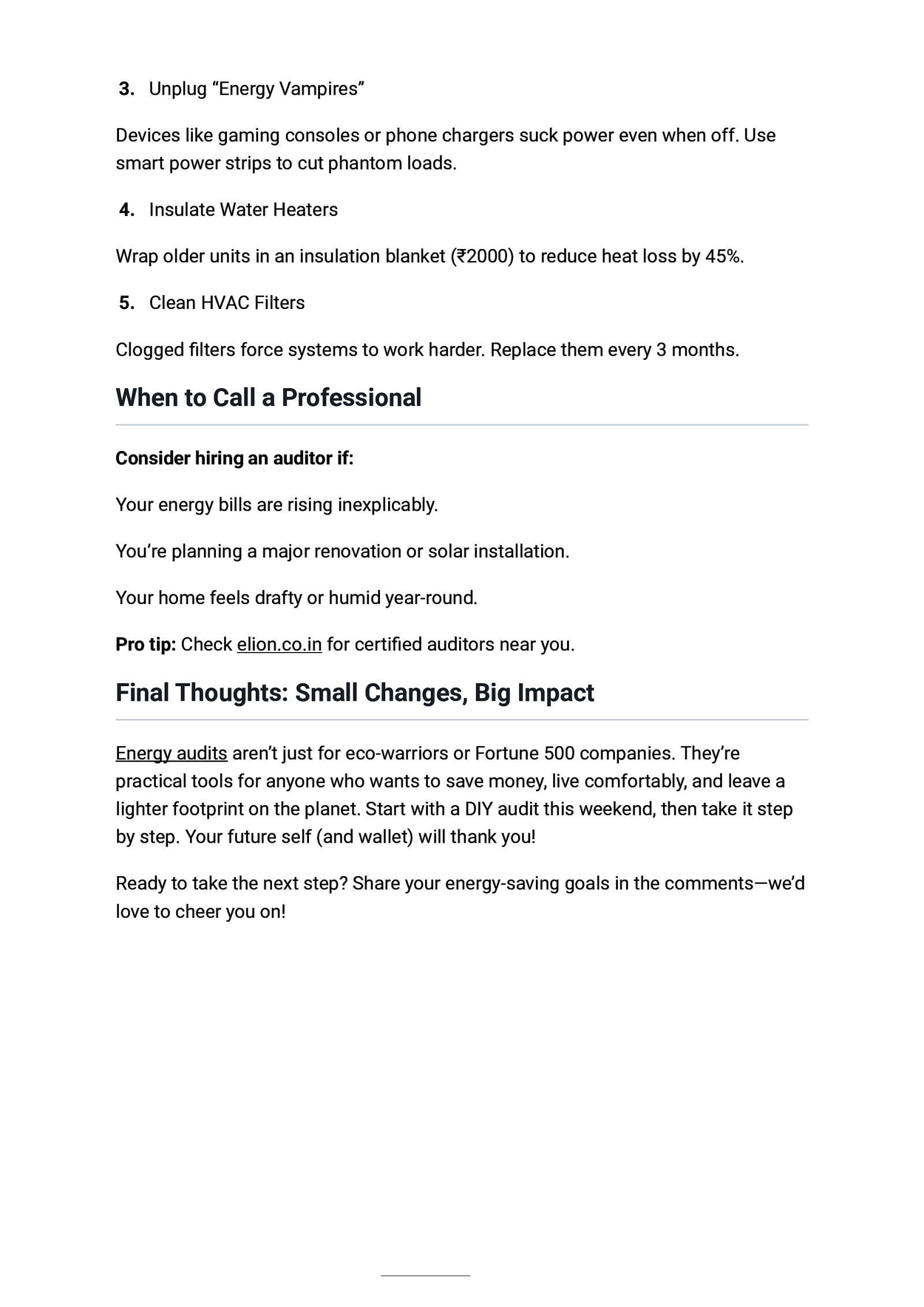Title: The Power of Energy Audits: Unlocking Efficiency, Savings, and a Greener Future Have you ever stared at an energy bill and wondered, “Why is this so high?” Or felt a chilly draft sneak through your windows in winter, despite cranking up the heat? You’re not alone. Energy waste is a silent budget drain for homes and businesses alike—but it doesn’t have to be. Enter the energy audit, your secret weapon to slash costs, boost efficiency, and reduce your environmental footprint. In this guide, we’ll break down what energy audits are, why they matter, and how they can transform your space into an energy-saving powerhouse. Whether you’re a homeowner, a small business owner, or a facility manager, you’ll walk away with actionable steps to start saving today. What Exactly is an Energy Audit? Think of an energy audit as a “health checkup” for your property. It’s a thorough assessment that identifies where energy is being wasted—like air leaks, outdated appliances, or inefficient HVAC systems—and provides tailored solutions to fix them. Certified auditors use tools like thermal imaging cameras, blower doors, and energy meters to diagnose issues you might never spot on your own. The goal? To create a roadmap for reducing waste, lowering bills, and making your space more comfortable and sustainable. Types of Energy Audits: Which One Do You Need? Not all audits are created equal. Here’s a quick comparison to help you choose: Audit Type Best For What’s Included Cost Preliminary (WalkThrough) Budget-conscious homeowners or small businesses Visual inspection, utility bill review, basic recommendations (e.g., LED upgrades) ₹0– >₹20000 General Audit Mid-sized homes or offices Detailed analysis, infrared scans, HVAC evaluation, prioritized savings tips ₹20000– ₹50000



